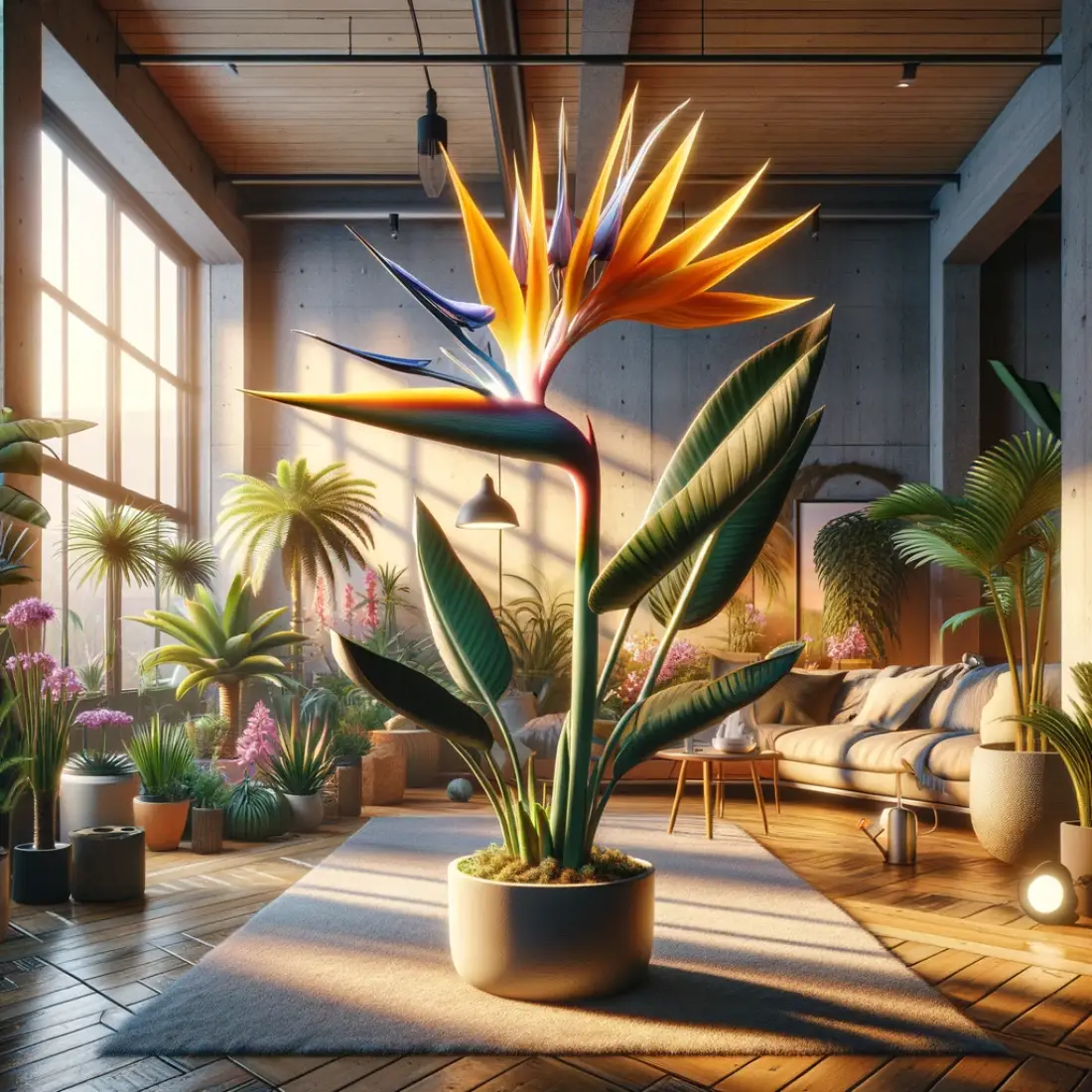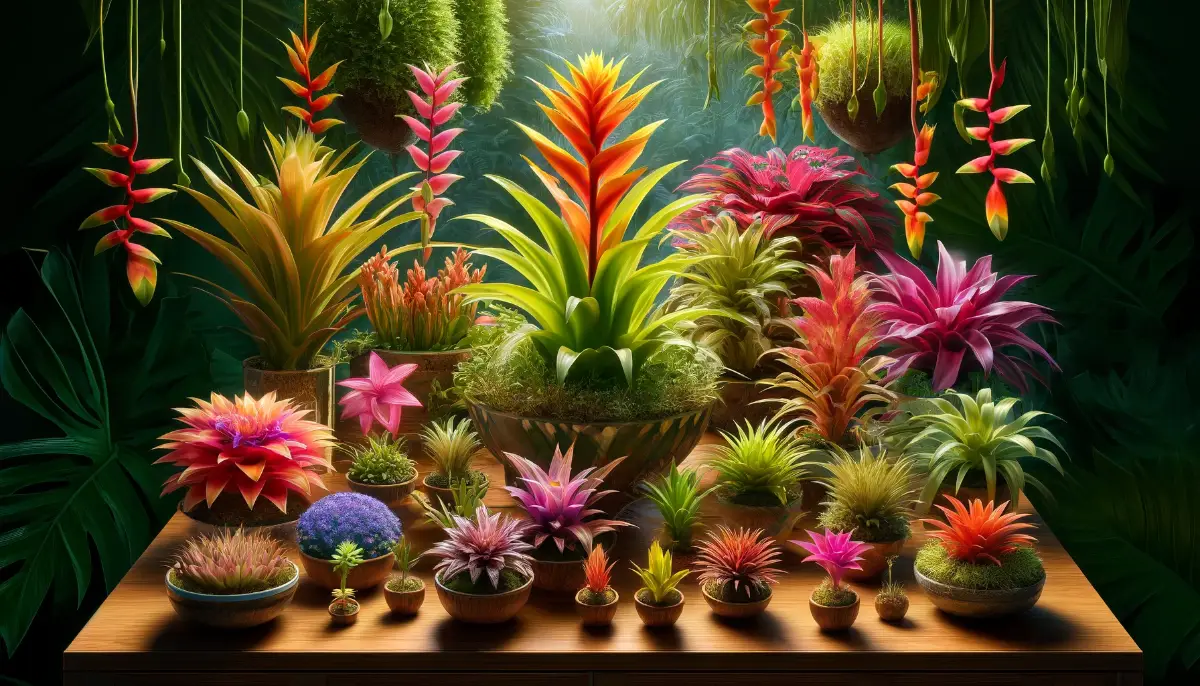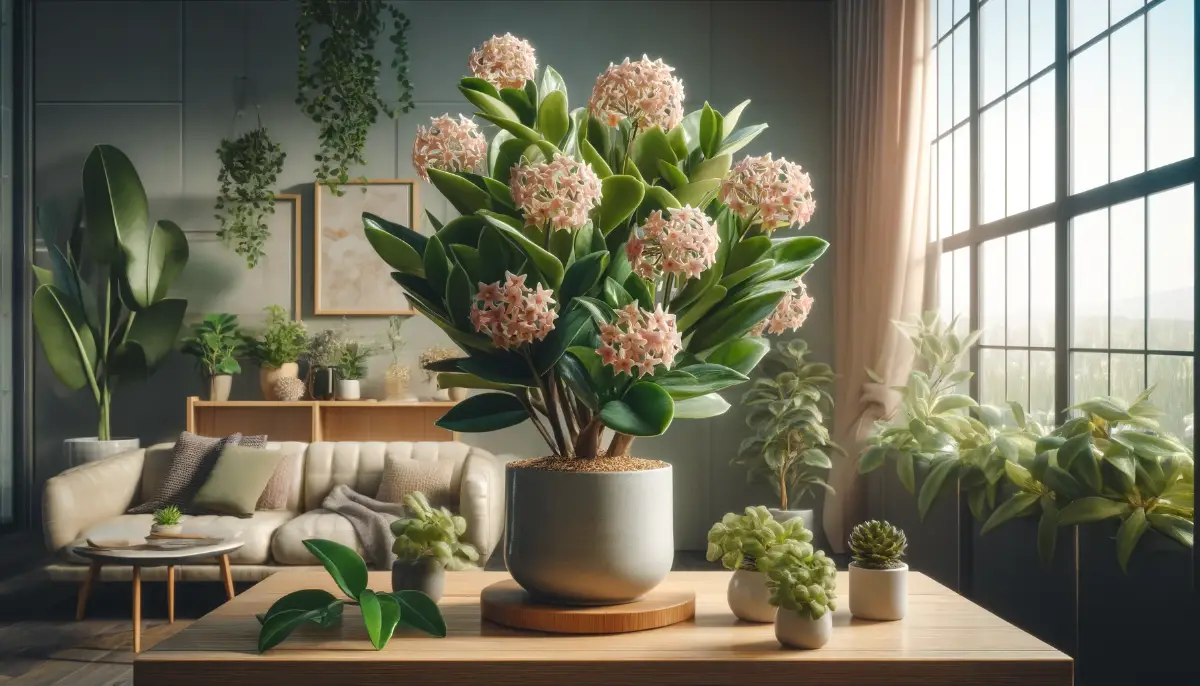Strelitzia reginae, commonly known as the Bird of Paradise, is a striking and exotic plant renowned for its vibrant, crane-like flowers that resemble the shape and brilliant plumage of a bird in flight. Native to South Africa, this plant can bring a tropical flair to any indoor or outdoor setting.
The key to successful cultivation lies in mimicking the plant’s natural environment as closely as possible. This involves managing several factors such as lighting, watering, temperature, and humidity. With the right conditions, the Bird of Paradise can grow robustly and may even bloom indoors, a feat that requires patience and attention to detail.
Optimal Growing Conditions for Strelitzia reginae (Bird of Paradise)
Creating the right environment is crucial for the healthy growth of Strelitzia reginae. Here are the key factors to consider to provide optimal growing conditions for this exotic plant:
Light Requirements
- Intensity: Bird of Paradise thrives in bright, indirect sunlight. It can tolerate some direct sunlight, but in hotter climates, the midday sun should be avoided as it can scorch the leaves.
- Duration: Aim for at least 6 hours of bright light daily. If growing indoors, placing it near a south-facing window is ideal or use supplemental lighting if natural light is insufficient.
Temperature and Humidity Preferences
- Temperature: This plant prefers warm conditions, ideally between 65°F and 70°F (18°C to 21°C) during the day and not dropping below 50°F (10°C) at night. Avoid placing it near cold drafts or heating vents.
- Humidity: Strelitzia reginae enjoys high humidity levels. Indoor environments often need additional humidity, which can be provided by misting the leaves regularly or using a humidifier.
Ideal Soil Conditions
- Soil Type: A well-draining potting mix is essential. Use a loamy soil enriched with peat for moisture retention and sand for improved drainage.
- pH Level: The soil should be slightly acidic to neutral (pH 6.5-7.5). Regular testing and adjustment of soil pH can help maintain the ideal conditions.
Air Circulation
- Good air circulation is important to prevent pests and diseases. However, avoid placing your Bird of Paradise in overly windy areas, which can damage the leaves.
By carefully managing these aspects of the plant’s environment, you can ensure your Bird of Paradise not only survives but thrives, potentially rewarding you with its distinctive and beautiful blooms. Adjustments to these conditions may be necessary depending on your specific climate and indoor settings, so monitoring and adapting your care approach will help maintain the health and beauty of your Strelitzia reginae.
Planting and Potting Strelitzia reginae (Bird of Paradise)
Proper planting and potting are crucial for the health and growth of Strelitzia reginae.
Choosing the Right Pot
- Material: Ceramic or terra cotta pots are ideal because they are porous and allow for better air and water movement, but plastic pots can also be used.
- Size: Start with a pot that is 2-3 inches larger in diameter than the current root ball. This plant likes to be somewhat root-bound, so avoid choosing a pot that is too large.
- Drainage: Ensure the pot has adequate drainage holes to prevent water from sitting at the bottom, which can lead to root rot.
Suitable Soil Mix
- Use a well-draining potting mix designed for tropical plants. A mixture of two parts peat, one part loam, and one part sand or perlite provides the drainage and nutrient retention that Strelitzia reginae needs.
- Incorporating organic matter such as compost can also help improve soil fertility and structure.
Initial Planting Steps
- Soil Preparation: Before planting, moisten the soil slightly to ensure it’s uniformly damp.
- Plant Placement: Gently remove the plant from its previous container, being careful not to damage the root system. Loosen the roots gently to encourage them to spread out in the new pot.
- Filling the Pot: Place the plant in the center of the pot and fill around it with your soil mix. Tap the pot gently on the ground to settle the soil and eliminate any air pockets. The soil should come up to the same level on the stem as it was previously.
- Watering After Planting: Water the plant thoroughly after repotting. This helps settle the soil around the roots and ensures that the plant has adequate moisture to recover from the transplant shock.
Post-Planting Care
- Positioning: Place the pot in a location that meets the light requirements of the Bird of Paradise—bright, indirect sunlight is best.
- Initial Watering: Keep the soil consistently moist but not waterlogged during the first few weeks to help establish the plant.
By following these steps, you’ll create a supportive environment that can enhance the growth and flowering potential of your Strelitzia reginae. Regular monitoring and adjustments based on the plant’s response to its new setting are important for ongoing care.
Watering and Feeding Strelitzia reginae (Bird of Paradise)
Proper watering and feeding are vital to ensure your Strelitzia reginae grows healthy and blooms beautifully. Here are detailed guidelines to help you optimize these aspects of care:
Watering Guidelines
- Frequency: Watering frequency for Bird of Paradise depends on the season and the plant’s environment. Typically, the soil should be allowed to dry out slightly between waterings. In warmer months, this might mean watering once a week, while in cooler months, every two weeks might suffice.
- Method: Water deeply until it runs out of the drainage holes. This ensures the entire root ball is moistened. Avoid letting the plant sit in standing water.
- Signs of Proper Watering: The soil should feel moist but not soggy. Leaves should be vibrant and firm. Drooping or yellowing leaves may indicate overwatering or underwatering.
Organic Feeding
- Type of Fertilizer: An organic, balanced fertilizer is ideal for Strelitzia reginae. Look for a fertilizer with equal parts nitrogen, phosphorus, and potassium (e.g., 10-10-10) that also includes micronutrients.
- Frequency of Feeding: During the growing season (spring and summer), feed the plant every month. Reduce feeding to every other month in fall and cease feeding in winter when the plant’s growth naturally slows.
- Application Method: Dilute the organic fertilizer according to the package instructions. Apply the fertilizer to moist soil to prevent root burn and ensure better absorption of nutrients.
- Benefits of Organic Fertilizers: Organic fertilizers release nutrients slowly, reducing the risk of over-fertilization and providing a more natural nutrient uptake for the plant. They also improve soil structure and increase microbial activity in the soil.
Monitoring and Adjustments
- Soil Moisture Checks: Regularly check the soil’s moisture level using a finger or a moisture meter to avoid overwatering or underwatering.
- Observing Plant Response: Monitor how the plant reacts to watering and feeding schedules. Adjustments may be needed based on changes in environmental conditions, such as shifts in temperature and light.
Additional Tips
- Mulching: Adding a layer of organic mulch around the base of the plant can help retain soil moisture and reduce temperature fluctuations.
- Quality of Water: Use room temperature water and if your tap water is highly chlorinated, let it sit overnight before watering to allow the chlorine to dissipate.
Proper watering and feeding will support your Strelitzia reginae in maintaining health, vigor, and the production of its spectacular flowers. Regular attention and adjustments based on the plant’s needs and environmental changes will ensure your Bird of Paradise thrives in your care.
Pruning and Maintenance of Strelitzia reginae (Bird of Paradise)
Proper pruning and regular maintenance are key to keeping your Strelitzia reginae healthy and visually appealing:
Pruning
- When to Prune: The best time to prune your Bird of Paradise is in the late winter or early spring, just before the growth season begins. This timing allows the plant to recover quickly and use its energy for new growth.
- How to Prune: Use clean, sharp shears to remove dead or damaged leaves at their base, close to the stem. Also, prune any leaves that appear too crowded to improve air circulation and light penetration, which is vital for the health of the plant.
- Flower Stalks: After a flower has died, prune the stalk close to the base to encourage more blooms in the future.
General Maintenance Tips
- Cleaning Leaves: Strelitzia reginae’s large leaves tend to accumulate dust. Clean them regularly with a damp cloth to ensure they can effectively photosynthesize. This also helps prevent pest infestations.
- Checking for Pests: Regularly inspect the leaves for signs of pests such as spider mites, scale, and mealybugs. These can be treated with insecticidal soap or neem oil.
- Repotting: Repot the plant every few years to refresh the soil and provide more room for growth. However, remember that Strelitzia reginae likes to be somewhat root-bound, so only increase the pot size if the roots have completely filled the current pot.
Soil and Root Care
- Soil Health: Refresh the top layer of soil annually to provide fresh nutrients and remove any salt buildup from fertilization.
- Root Inspection: When repotting, inspect the roots for signs of rot or disease. Trim any diseased or overly tangled roots to promote healthier growth.
Seasonal Adjustments
- Winter Care: Reduce watering and stop fertilizing in winter when the plant’s growth slows down. Ensure it’s not exposed to cold drafts.
- Summer Care: In summer, you might need to water more frequently due to higher temperatures and increased light exposure.
Blooming Characteristics:
- Appearance: The flowers of the Bird of Paradise resemble a bird’s head, with brilliant orange and blue petals emerging from a boat-shaped bract or spathe.
- Duration: Each bloom may last up to several weeks, and plants can produce multiple flowering cycles throughout the warmer months if conditions are favorable.
Timing:
- Seasonality: Typically, blooming occurs in late winter through early spring, though in optimal conditions, cycles can extend into summer.
Troubleshooting Strelitzia reginae (Bird of Paradise)
Properly caring for a Bird of Paradise involves recognizing and addressing issues promptly.
Yellowing Leaves
- Cause: Overwatering, poor drainage, or nutrient deficiency.
- Solution: Adjust watering schedule, ensure good drainage in the pot, and apply a balanced fertilizer.
Brown Leaf Edges
- Cause: Low humidity or salt buildup from excessive fertilization.
- Solution: Increase humidity around the plant and flush the soil with water periodically to remove excess salts.
Lack of Flowering
- Cause: Insufficient light, inadequate nutrient supply, or the plant may be too young.
- Solution: Move the plant to a brighter location, ensure it gets enough phosphorus in its fertilizer, and be patient with younger plants.
Stunted Growth
- Cause: Root-bound conditions, insufficient light, or pest issues.
- Solution: Repot into a slightly larger container, provide more light, and check for and treat any pests.
How to Recognize Plant Stress
- Visual Indicators: Drooping leaves, discolored leaves, and stunted growth are common signs of stress.
- Leaf Changes: Pay attention to leaf texture and color changes. Brittle or soft, mushy leaves can indicate various issues.
- Growth Patterns: Slow or halted growth can suggest environmental or nutritional problems.
Tips for Reviving a Struggling Plant
Ensure the plant’s light, temperature, and humidity needs are being met. Adjust the location of the plant or the conditions in the room accordingly.
Gently remove the plant from its pot and examine the roots. Healthy roots are firm and white. Trim away any black or mushy roots and repot into fresh, well-draining soil.
Modify your watering habits based on the condition of the soil and plant’s appearance. Use room-temperature water and consider a soil moisture meter to better gauge needs. Restart fertilization with a balanced, gentle formula, especially if the plant shows signs of nutrient deficiency.
Inspect for pests such as spider mites, mealybugs, and aphids. Treat infestations with insecticidal soap or neem oil, ensuring to follow up as needed to completely eradicate pests.
Remove dead or dying leaves and flowers to help the plant conserve its energy for recovery and new growth.
By taking a systematic approach to identify and resolve issues, you can help your Bird of Paradise recover and thrive. Regular observation and maintenance play critical roles in the health and longevity of your plant.
FAQs about Strelitzia reginae (Bird of Paradise)
What is the best light for a Bird of Paradise plant?
Bird of Paradise thrives in bright, indirect sunlight. Ideally, it should receive at least 6 hours of light per day. Direct sunlight can be tolerated in milder climates but should be avoided during the hottest parts of the day to prevent leaf scorch.
How often should I water my Bird of Paradise?
Water when the top inch of soil feels dry. Typically, this means watering once a week in summer and reducing to every other week in winter, depending on the humidity and temperature of your environment.
When and how should I fertilize my Bird of Paradise?
Fertilize monthly during the growing season (spring and summer) with a balanced, water-soluble fertilizer. Reduce feeding in fall and stop in winter when the plant’s growth slows down.
Why are the leaves of my Bird of Paradise turning yellow?
Yellow leaves can be a sign of overwatering, underwatering, or nutrient deficiency. Check the soil moisture and adjust your watering schedule accordingly. Also, ensure the plant is getting adequate nutrients.
How do I get my Bird of Paradise to bloom?
Ensure the plant is mature enough (typically 4-6 years), receives enough light, and has adequate nutrients, particularly phosphorus. Blooming also requires the plant to be slightly root-bound.
Can I grow a Bird of Paradise indoors?
Yes, Bird of Paradise can be grown indoors provided it has enough light and space to accommodate its large leaves. Make sure to place it in a bright room.
How big can a Bird of Paradise plant get?
Indoors, a Bird of Paradise can grow up to 6 feet tall, while outdoors, it can reach heights of over 20 feet in optimal conditions.
Does the Bird of Paradise plant need high humidity?
Yes, it prefers higher humidity levels. If your indoor air is dry, regularly mist the leaves or use a humidifier to increase moisture in the air.
How often should I repot a Bird of Paradise?
Repot every 2-3 years to prevent it from becoming too root-bound and to refresh the soil, though being slightly root-bound can help encourage blooming.
What are the common pests that affect Bird of Paradise plants?
Common pests include spider mites, mealybugs, and aphids. Regularly check the undersides of leaves and treat infestations early with insecticidal soap or neem oil.









